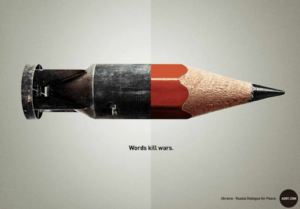Design Principle: Unity in Graphic Design
Unity is one of the seven principles of design, along with balance, scale, contrast, pattern, movement, and emphasis. By bringing all of these elements together, you can create a cohesive design that is visually appealing and compelling. In doing so, you’ll achieve unity.
Unity is important in graphic design because it brings your composition together, creating a concept and theme that helps you communicate your core message.
Without it, your composition can lack focus and seem like certain elements are out of place.
For businesses, this can impact how customers perceive you. Well-designed graphics are extremely valuable.
Graphics help:
- Create positive first impressions
- Establish credibility
- Distinguish your company from your competitors
- Build brand recognition
Therefore, it’s crucial that all of the elements in your composition create unity.
Need help selecting a company?
Based on your budget, timeline, and specifications we can help you build a shortlist of companies that perfectly matches your project needs. Get started by submitting your project details.
How to Implement Unity in Graphic Designs
Because unity is created using the six other graphic design elements, you must have a solid understanding of each of these elements to create a cohesive look.
- Balance
- Scale
- Contrast
- Repetition
- Movement
- Emphasis
Balance
Balance is the equal distribution of weight, color, texture, and space in a composition. Usually, that means creating symmetry. If someone were to cut down the middle of the page, each side would be identical.
However, you can also create balance in asymmetrical compositions by purposefully creating imbalance. This creates tension and conveys a sense of movement. You can do this by including a bunch of small elements on one side of the page to balance out a larger element on the other side.
You can also mess with how to incorporate balance using a radial design, which stems from a common center.
Check out these designs, which show a few different ways you can organize your composition while still achieving balance.

Source: Miss E’s Photography Blog
In addition to weight, you can also create balance using colors, shapes, patterns and movement. For example, bright colors can balance out neutral colors, and different types of shapes balance our design elements.
Scale
Scale shows the relative size of an object compared to the size of another object within your composition.
It is particularly important in creating a visual hierarchy within your design, and therefore, can impact the meaning and tone of your composition.
Your audience’s eyes are usually drawn to the largest element in your design first, so it should be the most important feature in your design. By increasing the scale of certain elements, you can put greater emphasis on them.
Scale can also be used to shift perspective and get viewers thinking about different aspects of your message.
Consider how this ADOT.com ad, which increases the size of a pencil so it looks like the other half of a bomb, uses scale to emphasize their message and promote peace between Ukraine and Russia.

Source: TrendHunter
This emphasizes the copy included on the graphic “Words kill wars.” and demonstrates that words are just as powerful as weapons.
Contrast
Contrast occurs when two elements oppose one another. For example, black text against a white background creates contrast. Because they’re visually very different, each element stands out.
This is particularly important when designing editorial content because it makes it easier for people to read your text. It’s also important for web design because it can improve the user experience.
However, color isn’t the only way to create contrast. You can also create contrast by making elements different sizes, adding different shapes, and positioning elements in different ways.
Repetition
Repeating elements create style, cohesiveness, hierarchy, and structure throughout your design.
To create repetition, great graphic design companies repeat many different types of elements including colors, shapes, motifs, patterns, alignments, and more.
In doing so, they create a memorable look and feel. The more your audience sees an image or a certain style, the more likely they are to absorb it.
While repetition is important for all types of graphic design, it’s particularly important for expanding a business’ brand awareness.
By creating a cohesive look, customers are more likely to recall information and associate it with a brand.
Movement
Movement refers to how your audience’s eyes move from one element of your composition to another.
By creating a visual hierarchy, you can guide your viewers through the design and highlight the most important elements.
Think about how the other elements can help you guide viewers:
- bright colors stand out against neutral colors
- patterns emphasize the overall look and feel of your composition
- people are always drawn to the largest element on a page.
Using this information, you can emphasize the first, second, and third most important parts of your design.
Emphasis
This part of the design should catch the viewer’s attention. You can generate emphasis by creating contrast, whether that’s through color, texture, size, or shape.
These design choices don’t just help you grab your audience’s attention, they also help you communicate your message by emphasizing the most important aspect of your design.
Create Unity in Your Design to Communicate Effectively
Without unity, a design can seem disjointed and be confusing to viewers.
As designers are composing a design, they must keep balance, scale, contrast, repetition, movement, and emphasis in mind in order to deliver unity.
In doing so, they can create a harmonious and successful design that appeals to viewers and effectively communicates with their audience.
Need help selecting a company?
Based on your budget, timeline, and specifications we can help you build a shortlist of companies that perfectly matches your project needs. Get started by submitting your project details.